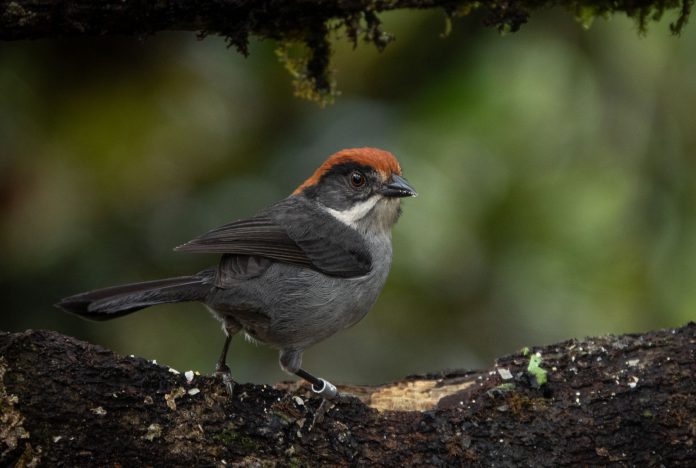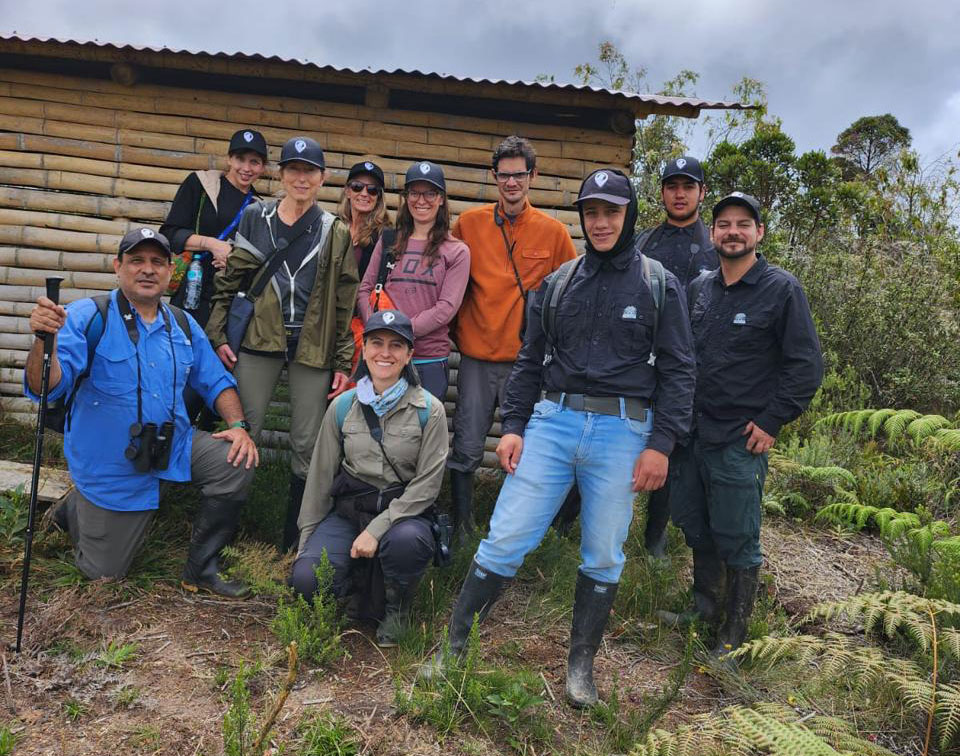
There is a seed- and fruit-eating bird native to the Antioquia region of Colombia known as the Antioquia brushfinch, or the Montarito Paisa—with a black-and-white body and an orange mohawk-looking tuft on its head—that is so endangered it was unknown to science for years.
Wise Ancestors, a Scotts Valley-based nonprofit, is working with a local biodiversity organization there, called the Instituto Humboldt, and the people of the Paisa Region, to produce the first reference genome for the bird, as well as a diet and population study.
“We’re really just connecting dots,” said Ann Pace, Wise Ancestors’ executive director, explaining they’re optimistic their efforts will help to safeguard the species as development pressures encroach on its fragile habitat. “We’re bringing in expertise from these communities. It’s not just us swooping in, doing research on these species they care about, and then leaving.”
It’s this sort of approach, of engaging Indigenous nation and locals in the process—including when it comes to what should happen to the knowledge that comes out of their overseas forays—that this Silicon Valley-adjacent 501(c)3 organization is promoting at the IUCN World Conservation Congress in Abu Dhabi this week.
The community-centered, decentralized learning-and-sharing method may not be the simplest (or cheapest) way to extract and spread data about new and understudied species in the wild, but Wise Ancestors believes the research that comes out of their work will lead to a much richer picture of about the environment.
“It definitely is a much slower and considered approach,” said Community Engagement Director Katie Jones, a South Piegan member of the Blackfeet Nation, speaking over the phone from Colorado, as she looked forward to heading to the conference. “We’re really concerned with doing the work the right way, and I think the reputation we build—and the relationships we build—will be lasting.”
Jones previously worked as a plant ecologist on a large climate change research project, with the National Ecological Observatory Network, which she says helped to underscore, for her, the relationships between biodiversity and how humans interact with the environment.
And that’s something her new Scotts Valley employer gets, she said.
“What really sets Wise Ancestors apart is they’re really putting that community piece, and those community perspectives, first,” Jones said. “(With) a lot of projects, we see that as a secondary component.”

In a sense, Wise Ancestors is a spin-off of the Human Genome Project, which was launched in October 1990 and led to the first sequencing of the human genome—essentially a blueprint for our species.
The 3 billion letters of code were published online on July 7, 2000, by a team at UC Santa Cruz, the first major ripple in the spread of the genomics field, which is anticipated to be worth nearly $95 billion by 2030.
Pace has come from working for a company called Hyseq over the hill.
“Hyseq, like a lot of other companies at the time, was getting these sequences from humans and trying to patent them,” she said, recalling how exciting it was to join the Human Genome Project and to work alongside famed scientist David Haussler. “I was involved behind the scenes, more like getting the grant money and organizing the people to do the work.”
After 23 years with the Genomics Institute, she was ready for something new.
As she retired from UCSC, Haussler came to her and asked her to do one more thing—work on Wise Ancestors.
The team that formed included Anthony Aguirre, a physicist, Beth Shapiro, an evolutionary biologist—who has since gone on leave to work for Colossal Biosciences (which made waves in recent months for “bringing back” the dire wolf from extinction)—and Keolu Fox, a geneticist based at UC San Diego.
“I thought maybe I’d do some work that related to climate, or the environment, or animal species,” Pace said, adding very soon it became clear how key genome sequencing can be for endangered animals. “If the species go extinct, it’s pretty much gone forever.”
Their idea was to collect as much genetic information as possible.
“We realized as we dug into that there was a lot more to do than just sequence genomes,” she said, noting they added the idea of having a biobank with living tissue and emphasizing putting power back in the hands of Indigenous communities and other nearby residents.
“We talk to them about any preferences they have for what happens to the data that’s generated in the project,” she said. “Would they be OK with that data being in a public database or not?”
To learn more, visit wiseancestors.org.












